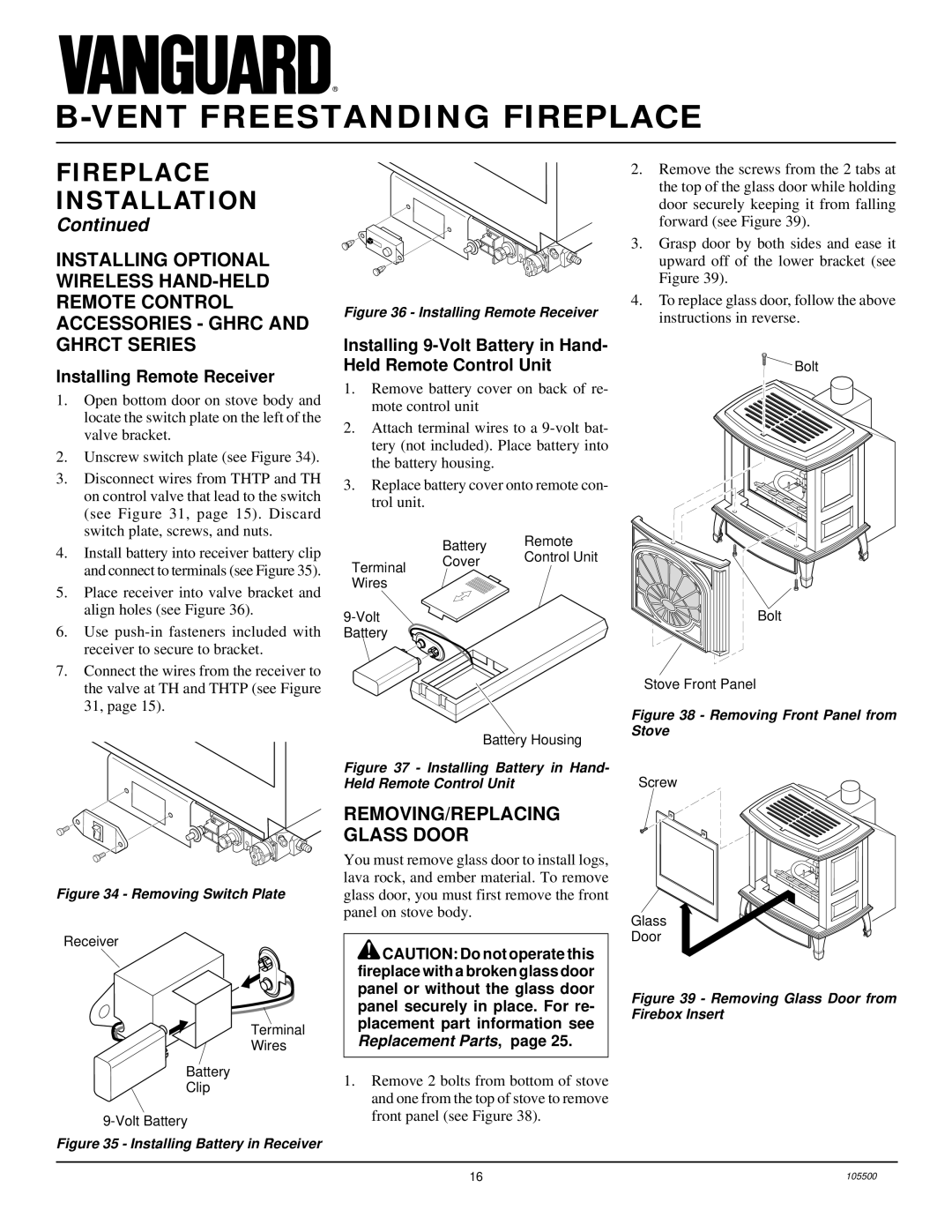SBVBN(A), SBVBP(A) specifications
Vanguard Heating SBVBN(A) and SBVBP(A) are advanced heating solutions designed to provide efficient temperature control for residential and commercial applications. Renowned for their innovative features and technologies, these models are engineered to enhance comfort while minimizing energy consumption.One of the main characteristics of the SBVBN(A) and SBVBP(A) series is their high energy efficiency. Both models utilize advanced heat exchanger technology which allows them to extract maximum heat from the fuel consumed. This efficient heat transfer minimizes waste and leads to lower energy bills for users. The systems typically achieve impressive AFUE (Annual Fuel Utilization Efficiency) ratings, making them an environmentally friendly choice.
Another noteworthy feature of these heating units is their compact, space-saving design. Vanguard has effectively utilized modern engineering principles to produce equipment that can fit into various installation spaces without compromising performance. This is particularly advantageous for urban settings where space is limited.
The SBVBN(A) and SBVBP(A) models incorporate smart technology for enhanced user convenience. Smart thermostats and connectivity options allow users to control their heating systems remotely via smartphone applications. This capability provides greater flexibility and comfort, ensuring that homes and spaces are always at the ideal temperature.
Furthermore, noise reduction technology is integrated into these heating systems, ensuring quiet operation. This is particularly important for residential installations where a peaceful environment is desired. The design minimizes operational noise, allowing users to enjoy a tranquil atmosphere without the disturbance of traditional heating systems.
Safety features are also a prominent aspect of the Vanguard Heating SBVBN(A) and SBVBP(A) models. These include advanced flame sensing technology, automatic shut-off capabilities, and robust construction materials that enhance durability. These features not only ensure reliable performance but also provide peace of mind to users regarding safety concerns.
In terms of maintenance, Vanguard has made these systems user-friendly. They are designed for easy access to components, simplifying routine maintenance tasks and reducing overall service costs. This focus on ease-of-use contributes to the longevity and reliability of the heating systems.
Overall, Vanguard Heating SBVBN(A) and SBVBP(A) models stand out in the market due to their energy efficiency, advanced technologies, compact design, quiet operation, and comprehensive safety features. They embody a commitment to comfort, sustainability, and user satisfaction, making them a worthy choice for anyone in need of reliable heating solutions.

